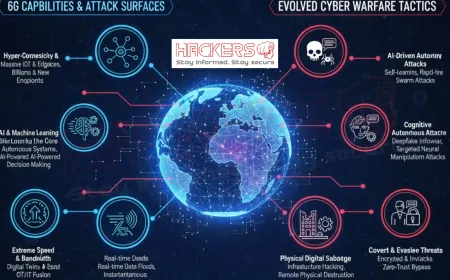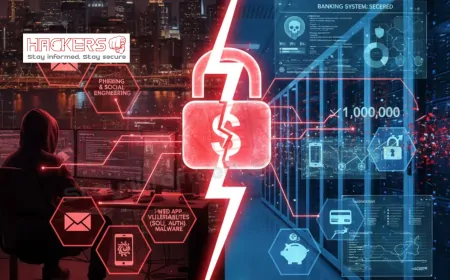Why Are Autonomous Vehicles Now Prime Targets?
Picture this: you step into a car, tell it where to go, and relax as it drives itself safely through traffic. No steering wheel. No pedals. Just trust in technology. This future is no longer a dream. Companies like Waymo, Cruise, and Tesla are already running robotaxis in cities. Delivery bots roam sidewalks. Trucks haul freight across states without drivers. But here is the dark side: the more we rely on self-driving vehicles, the more attractive they become to hackers. A single breach could cause crashes, gridlock, or worse. Lives are on the line. This blog explains, in simple terms, why autonomous vehicles are now prime cyber targets, how attackers could strike, and what the industry is doing to keep us safe. The road ahead is exciting. But it is also dangerous.

Table of Contents
- Introduction
- What Are Autonomous Vehicles?
- Why Hackers Target Autonomous Vehicles
- The Expanded Attack Surface
- Key Vulnerabilities in AV Systems
- Types of Attacks on Self-Driving Cars
- Real-World Incidents and Research
- How to Secure Autonomous Vehicles
- The Future of AV Cybersecurity
- Conclusion
- Frequently Asked Questions
What Are Autonomous Vehicles?
Autonomous vehicles (AVs) are cars, trucks, or buses that drive themselves using sensors, cameras, radar, and artificial intelligence. They follow traffic rules, avoid obstacles, and navigate roads without human input. The Society of Automotive Engineers (SAE) defines six levels of autonomy:
- Level 0: no automation (traditional car)
- Level 1 to 2: driver assistance (cruise control, lane keep)
- Level 3: conditional automation (hands off in some conditions)
- Level 4: high automation (no driver needed in specific areas)
- Level 5: full automation (anywhere, anytime)
Most AVs today are Level 4. They operate in geofenced zones like cities or highways. Full Level 5 is still years away.
Why Hackers Target Autonomous Vehicles
AVs are not just cars. They are computers on wheels. And they are valuable in many ways.
- High financial stakes: a fleet of robotaxis is worth billions
- Safety impact: one crash can kill or injure people
- Data goldmine: location, camera feeds, passenger conversations
- Reputation damage: a hacked AV brand loses trust fast
- Ransomware potential: lock a fleet, demand payment
- Nation-state interest: disrupt transport, cause chaos
A successful attack is not just profit. It is power. Hackers, criminals, competitors, and even governments want in.
The Expanded Attack Surface
Traditional cars had few digital parts. AVs are different. They are packed with connected systems.
- Sensors: LiDAR, radar, ultrasonic, cameras (dozens per vehicle)
- Computing: powerful onboard CPUs and GPUs for AI
- Connectivity: 5G, V2X (vehicle-to-everything), Bluetooth, Wi-Fi
- Software: millions of lines of code, constant over-the-air updates
- Cloud backend: fleet management, maps, traffic data
- Supply chain: chips, sensors, and software from dozens of vendors
Every component is a door. And many are left unlocked.
Key Vulnerabilities in AV Systems
Each part of an AV can be exploited.
| Component | Vulnerability | Potential Impact |
|---|---|---|
| Sensors | Spoofing with light, sound, or stickers | Phantom obstacles, missed real ones |
| Wireless Comms | Jamming, replay, man-in-the-middle | Loss of control, fake traffic data |
| AI Models | Adversarial inputs, model theft | Misclassify signs, pedestrians |
| OTA Updates | Unsigned or tampered firmware | Backdoor in entire fleet |
| Cloud Backend | API flaws, weak authentication | Remote control of vehicles |
Types of Attacks on Self-Driving Cars
Researchers have demonstrated many real attacks.
- Sensor blinding: shine lasers at LiDAR to hide objects
- GPS spoofing: feed fake location data via drone or antenna
- Sticker attacks: place patterns on stop signs to confuse AI
- V2X hijacking: send fake emergency brake messages
- Remote takeover: exploit telematics to unlock, start, or steer
- Denial of service: jam 5G to freeze a fleet in place
In 2019, Keen Security Lab hacked a Tesla Model S remotely. They controlled wipers, brakes, and mirrors through a browser flaw. Tesla patched it fast, but the message was clear: no AV is unhackable.
Real-World Incidents and Research
AV hacking is not just lab theory.
- 2015: Jeep Cherokee remotely disabled on highway (Fiat Chrysler recall)
- 2021: Waymo vehicles confused by traffic cone prank (not cyber, but shows sensor limits)
- 2023: Chinese researchers spoofed Baidu Apollo AV with $100 device
- 2024: Ransomware group claimed access to AV fleet management system
- University studies: over 50 papers show sensor and AI attacks work
The U.S. NHTSA now requires cybersecurity reporting for AVs. Europe’s UNECE WP.29 mandate demands secure updates and threat monitoring.
How to Secure Autonomous Vehicles
Security must be baked in from design.
- Hardware root of trust: secure chip verifies all code
- Sensor fusion: cross-check LiDAR, radar, and camera data
- Encrypted V2X: sign and verify every message
- Secure boot and OTA: only signed updates allowed
- Zero-trust architecture: no device trusts another automatically
- AI robustness: train models against adversarial examples
- Fleet monitoring: detect anomalies in real time
- Physical safeguards: anti-tamper sensors, kill switches
Companies like Karamba Security, VicOne, and Upstream offer AV-specific protection. Standards like ISO/SAE 21434 guide the industry.
The Future of AV Cybersecurity
By 2035, millions of AVs will be on roads. Security will evolve:
- Quantum-safe encryption for long-term data
- AI vs. AI: defensive models counter attack models
- Blockchain for update integrity and audit trails
- Global incident sharing: like aviation safety boards
- Insurance-driven security: safer AVs pay less
Governments will mandate penetration testing, bug bounties, and public disclosure. The first major AV cyber fatality will force change, just like aviation tragedies led to seatbelts and black boxes.
Conclusion
Autonomous vehicles promise safer, cleaner, and more efficient transport. But they are also rolling supercomputers, packed with sensors, AI, and wireless links. This makes them prime targets for hackers seeking money, chaos, or control. From sensor spoofing to remote takeover, the risks are real and growing. The good news? The industry is responding. With secure design, constant updates, and global standards, we can reduce the danger. But vigilance is key. Manufacturers, regulators, and drivers must treat every AV as a critical system. The future of transportation is autonomous. Let us make sure it is also secure.
Frequently Asked Questions
What is an autonomous vehicle?
A self-driving car, truck, or bus that uses sensors, cameras, and AI to navigate without a human driver.
Can someone hack my Tesla?
Yes, but it is hard. Tesla has strong security and fast patches. Still, no system is 100% safe.
Can hackers make an AV crash?
Yes. By spoofing sensors, sending fake commands, or jamming signals, they can cause dangerous behavior.
Are robotaxis more vulnerable?
Yes. They are always connected, carry passengers, and operate in public. A fleet hack affects many at once.
What is sensor spoofing?
Tricking sensors with light, sound, or fake signals so the car “sees” things that are not there.
Is GPS hacking a big risk?
Yes. Fake GPS can make an AV think it is blocks away, leading to wrong turns or crashes.
Can over-the-air updates be hacked?
Yes. If not signed properly, malware can spread to every vehicle during an update.
Do AVs record everything?
Yes. Cameras, microphones, and location data are stored for training and safety. This is valuable to hackers.
Can a hacker unlock my car?
Yes. Many AVs allow remote access for fleet managers. Weak authentication is a common flaw.
Are delivery robots at risk?
Yes. They are small, connected, and carry goods. Stealing or redirecting them is easy profit.
Has a self-driving car been hacked on the road?
Not in public crashes, but lab and controlled tests prove it is possible. Real incidents are likely hidden.
Who is responsible if an AV is hacked?
The manufacturer, usually. New laws are defining liability for cyber failures.
Can AVs detect attacks?
Some can. Anomaly detection flags strange sensor data or commands. But not all systems have this.
Is 5G a security risk for AVs?
It enables real-time control but increases exposure. Secure network slicing helps isolate traffic.
Can I turn off connectivity?
Not easily. AVs need cloud links for maps, traffic, and updates. Isolation reduces function.
Are Chinese AVs less secure?
Not necessarily. All face similar risks. But data laws and supply chain trust raise concerns.
Will insurance change for AVs?
Yes. Premiums will depend on security ratings, update history, and breach response.
Can blockchain help AV security?
Yes. It secures update logs, verifies sensor data, and enables trusted V2X communication.
What should I do as a passenger?
Choose reputable operators. Report odd behavior. Know emergency overrides. Stay alert.
When will AVs be safe from hacks?
Never completely. But with strong design, updates, and oversight, risks can be managed like aircraft today.
What's Your Reaction?


























































